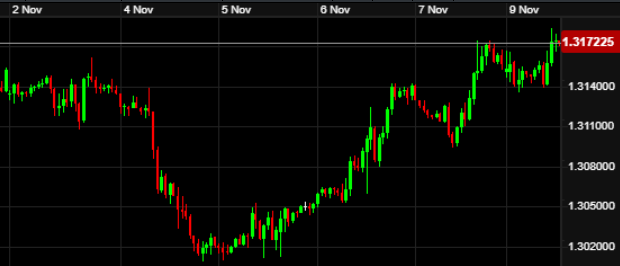ACM Update 10-11-25

Cautious and gradual became just gradual, and the Bank of England were divided. In their penultimate meeting of the year, interest rates were held but in a knife-edge vote. This was widely due to the looming Budget, which Rachel Reeves opted to drop clues on last week also.
In the US, the Government shutdown officially became the longest, whilst data releases remained sparse. Those that were published didn’t paint a great picture either. The Supreme Court also saw the start of the tariff hearing.
This week, there are a multitude of bank holidays on Tuesday, the same day as UK unemployment data also appears. UK GDP lands on Thursday. The evolving US shutdown and UK pre-Budget politics are likely to remain major market drivers.
The Bank of England took the stage on Thursday lunchtime for their penultimate meeting of 2025. This saw a divided committee, producing a 5-4 split to hold UK interest rates at their current 4%, whilst stating that they were “likely to continue on a gradual downward path”.
As always, the Bank’s Governor, Andrew Bailey, holds the casting vote in the event of a tie. In his comments after, Bailey stated they needed to see more evidence that inflation was slowing, before cutting rates. Referring to the September CPI figures coming in under expectation, he explained that they were looking for more evidence than “just one number”.
The decision left the door firmly ajar for a rate cut in the next meeting on 18th December. A raft of other economic data releases will be published between now and then, as well as the committee having the chance to digest what comes out of the Budget.
Speaking of which, Chancellor Rachel Reeves delivered an unusual pre-Budget speech last week in Downing Street. She declared herself as having to make “necessary choices” and blamed the fact the “world has thrown more challenges our way” for these.
Reeves again refused to rule out breaking the Labour manifesto pledge of raising income tax, VAT or National Insurance, saying she was simply “setting the context for the Budget”. The nervousness around GBP continues as a result, with the Budget measures expected to harm the UK economy going forwards and lead to faster interest rate cuts.
The Bank of England’s Chief Economist spoke on Friday, just a day after the vote. Huw Pill played down the significance of a slight change of wording since the last BoE meeting. Narrative changed from “cautious and gradual” to just “gradual” when describing the path downwards for UK rates.
Pill suggested that little should be read into that change, describing the 5-4 vote as evidence that risks are very finely balanced at present. He was one of those in favour of a hold, for the record. Markets are currently pricing a circa 65% chance of a rate cut in December.
Other UK data releases were few and far between, but the latest Services PMI release was at least better than expected. Sterling edged up against the Dollar on the week, following a dip after the Reeves speech. Movements on the pair can be seen in the chart below:

The US Government shutdown continues to cause issues, now hitting 40 days in length. It continues to impact US data releases, at a time when markets are already nervous about weak data. That theme continued last week, with the latest US jobs data for October unable to be collated.
Only the ADP Non-Farm data (not collated by a Government agency) was published. This suggested 42,000 jobs added to the economy in October, marginally better than forecast. Another report from Challenger, Gray & Christmas suggested over a million job cuts year to date in the US, with 150,000 in October alone. The former is up 65% on the same period last year.
Elsewhere, American consumers are becoming more and more disgruntled. The latest University of Michigan figures on consumer sentiment were a fraction above the June 2022 low, which itself goes all the way back to 1978. Gloomy reading.
Aside from a raft of speeches from Federal Reserve policymakers making their own cases for a rate cut or hold in the December meeting, US focus was on the Supreme Court last week. This is the hearing to determine whether Trump’s tariff implementations were indeed legal.
Three of the committee members were sceptical with Trump’s lawyers about the way they had imposed tariffs. According to two agencies, predictions that the tariffs will survive fell considerably after the opening arguments in the case, one agency seeing it as low as 20%. Even if the committee declares the use of tariffs illegal, Trump still has other ways he can push them through. It just becomes slightly more complicated to do so.
The above, combined with the shutdown saw the Dollar weaken off in the second half of the week. Markets await US data for more direction, which may well emerge this week after some progress on the shutdown over the weekend. An initial deal passed the Senate last night, as some Democrats joined Republicans by voting in favour. There are more steps to come yet, but progress is progress. The latest US inflation report is, in theory, scheduled for this week.
After the ECB’s interest rate hold of ten days ago, it was all pretty quiet on the continent. The Manufacturing & Services PMI data releases remained OK for most of the bloc’s leading players in October. This offered some optimism for growth prospects for the overall economy that the ECB are searching for.
Christine Lagarde spoke at an event where she explained that labour demand is cooling in Europe of late, citing the global environment and international trade policies as the main reason. The Manufacturing sector, the ECB believes, has been most held back by tariffs. She also spoke about the 21st country to be adopting the Euro on 1st January 2026, Bulgaria.
Meanwhile, fellow ECB member for Germany, Joachim Nagel, gave a “very 2025” speech. The Bundesbank President declared how he uses AI to check his policy speeches, to find out how the messaging will be perceived on the hawkish-dovish spectrum.
Overall, it was a reasonably flat week for Sterling-Euro, as shown below:

The week ahead:
Monday – BoE Lombardelli speech (09:10)
Tuesday – US/CAN/FRA BANK HOLIDAY, UK Unemployment & Claimant Count (07:00), German & EU ZEW Economic Sentiment (10:00)
Wednesday – BoE Pill speech (12:05), Fed Williams (14:20) Fed Paulson (15:00) Fed Waller (15:20) Fed Bostic (16:30) Fed Miran (17:30) speeches
Thursday – UK GDP (07:00), BoE Greene speech (12:00), Federal Budget Balance (19:00), US CPI inflation (Tentative)
Friday – Eurozone Flash GDP (10:00), US Retail Sales (Tentative)
As per the above, a reminder of a host of bank holidays to come on Tuesday this week in the US, Canada and some European nations, for Remembrance Day. As a result, there will be no US-Dollar activity on Tuesday.
US data will remain dependent on the progress with a shutdown deal. Even if reached, furloughed workers will take time to compile all of the relevant releases, so we can expect either inaccurate or rushed data. This at a time when US data is already being taken with a pinch of salt, after recent Trump meddling.
There are also several Federal Reserve policymaker speeches, predominantly on Wednesday. These are followed by the Federal Budget Balance on Thursday, where US debt is spiralling out of control.
For the UK, Unemployment data for October lands on Tuesday, expected to show a further rise for the metric to 4.9%. The number of those claiming benefits is also released simultaneously, along with average earnings (wage growth). The latter is expected to hold at 5.0%, which is still hotter than inflation, exacerbating the problem.
UK GDP output for September arrives on Thursday. This is projected to show 0.0% growth for the month, which would mean 0.2% growth for Q3 overall. Hardly the figures Reeves and Starmer would have been hoping for and reaffirming the difficult position they are in with the Budget.
Other policymaker speeches from the Bank of England are dotted throughout the week. Claire Lombardelli spoke this morning, whilst Chief Economist Huw Pill and newer member Megan Greene are on Wednesday and Thursday respectively.
In Europe, little of note. The latest GDP figures for Q3 also appear in the Flash reading. This is expected to mirror the UK, at 0.2% for the period. Economic sentiment figures are published in Germany and the Eurozone on Tuesday.
We can expect Dollar volatility this week, with or without data. If a deal to end the shutdown is finally reached, any data published could emerge unexpectedly, causing movement. With movements of over 1% on GBP-USD last week, we can expect the potential for the same again.
For any upcoming FX exposures, reach out to the Aston team for more information on how to protect your costs.
Have a great week.